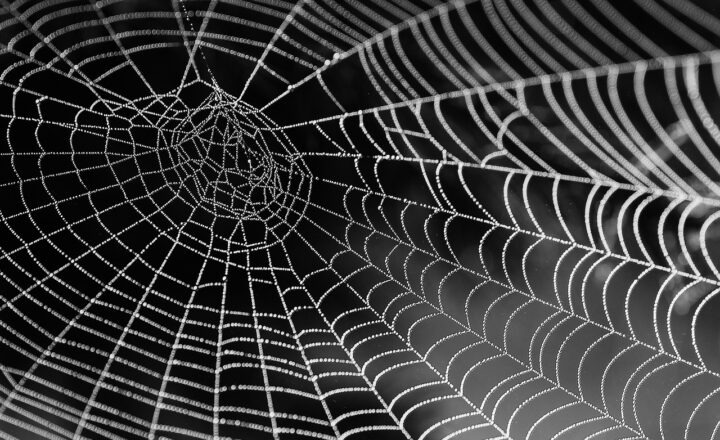The Dark Side of the Internet: 7 Weird Phenomena That Will Shock You
November 18, 2024

The internet, a realm both wondrous and bewildering, has revolutionized the way we communicate, learn, and share information. Yet, beneath its surface lies a darker side, teeming with bizarre phenomena that only the keenest of explorers dare to uncover. In this article, we delve into seven strange and shocking occurrences that illustrate the internet’s peculiarities, revealing just how bizarre the digital world can be.
1. The Rise of Creepypasta
Creepypasta refers to horror-related legends or images that have been copied and pasted across the internet. They stem from online forums, social media platforms, and websites dedicated to horror fiction. Unlike traditional horror, creepypasta often blurs the line between reality and fiction, leading readers to question their safety in an increasingly digital world.
Characters like Slender Man and the Russian Sleep Experiment have gained notoriety, inspiring fan art, spin-offs, and even films. The unsettling nature of these narratives reveals a cultural fascination with the macabre, showcasing how digital folklore can evolve and influence both creators and audiences.
2. Dark Web: The Hidden Underbelly of the Internet
The Dark Web is often perceived as a digital underworld that harbors illicit activities, from the sale of drugs and weapons to human trafficking. Accessible only through specific software such as Tor, the Dark Web operates beyond the reach of conventional search engines, which lends to its notorious reputation.
While it does house illegal activities, it also serves as a platform for whistleblowers, activists, and those in oppressive regimes who seek anonymity. This duality presents a chilling juxtaposition of the internet as both a facilitator of crime and a sanctuary for free speech.
3. The Phenomenon of Internet Hoaxes
With the internet’s ability to disseminate information at lightning speed, hoaxes have become prevalent, many of which take on a life of their own. From the infamous “Momo Challenge” to false viral rumors about celebrities, these hoaxes often spread fear and misinformation
The virality of these hoaxes stems from our collective tendencies toward panic and sensationalism, demonstrating how quickly truth can become obscured within the vast expanse of the web.
4. Networked Multilevel Marketing Schemes
Internet has given rise to innumerable get-rich-quick schemes, many of which operate as multilevel marketing (MLM) programs. Often advertised as lucrative business opportunities, they typically promise high returns for minimal investment. However, beneath the surface lies a financial trap that benefits only a select few at the top.
The ability for these schemes to thrive online highlights our vulnerabilities, particularly in the age of economic uncertainty, where people are eager to find alternative income streams.
5. Social Media Challenges Gone Wrong
From the Ice Bucket Challenge to the more sinister Tide Pod challenge, social media has become a platform for trends—some harmless, others damaging. These challenges can escalate quickly, leading participants into dangerous situations or even resulting in severe injuries or fatalities.
The desire for virality can overshadow personal safety, presenting a chilling lesson on the power of peer pressure and impulsivity in the digital age.
6. The Strangest Viral Trends
Surreal trends frequently dominate social media feeds, including videos of bizarre stunts, obscure memes, and even unusual beauty rituals. One notable trend was the “Kylie Jenner Lip Challenge,” where participants attempted to plump their lips using suction cups, leading to injuries and infections.
Such trends often provoke reactions of disbelief and entertainment, highlighting behavioral psychology within group dynamics and the influence of celebrity culture on internet users.
7. The Influence of Internet Subcultures
The web hosts a multitude of subcultures, some benign and others deeply troubling. Groups that glorify extremism, hate, or self-harm convene in forums and social media, creating echo chambers that can intensify dangerous ideologies or behaviors.
The power of the internet as a tool for community building can often result in very real-world effects, showcasing the importance of monitoring and responding to harmful online movements.
Conclusion
As we delve deeper into the virtual world, understanding the dark phenomena that exist is imperative for forming a safer online environment. By remaining vigilant and educated about these issues, we can better navigate the complexities of the internet while acknowledging both its potential and its perils. The internet is neither wholly good nor evil; rather, it is a reflection of human nature. As we embrace its wonders, we must also confront its shadows, ensuring we use this powerful tool responsibly for the betterment of society.
Whether you are a casual user or a digital warrior, staying informed about these bizarre occurrences can enhance your experience while ensuring a secure and enriching internet experience.







